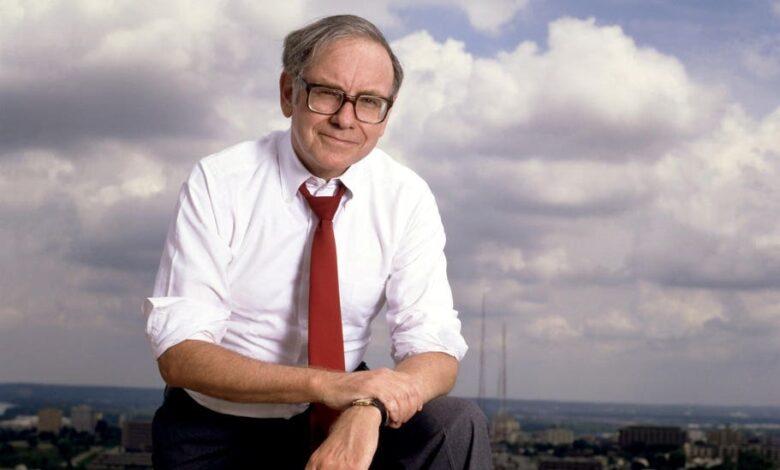Three Timeless Investment Lessons From Warren Buffett’s Annual Letter

In reality, Charlie was the “architect” of the present Berkshire, and I acted as the “general contractor” to carry out the day-by-day construction of his vision. — Warren Buffett
Warren Buffett, Berkshire Hathaway’s CEO and Chairman, writes an annual letter that never fails to contain tremendous insights as he is gifted in explaining complex topics in a digestible format. Charlie Munger, who served as Vice Chairman until he passed away just shy of his hundredth birthday in late November 2023, was given a touching tribute to begin the letter. Their partnership in managing Berkshire produced arguably the most remarkable extended performance for investors ever recorded. Since they began operating Berkshire in 1965, the stock has risen at an annualized pace of 19.8%. The S&P 500 has had an annualized return of 10.2% during the same timeframe. Even over a shorter period, Berkshire has significantly outperformed the S&P 500. As a rough proxy for the growth of the company’s intrinsic value, the book value growth has also far outstripped the appreciation of the S&P 500.
Berkshire Hathaway Performance
Glenview Trust, Bloomberg
While there are countless lessons to learn from Buffett’s letter, this article will distill his annual missive into three timeless insights.
Lesson 1: Focus on what matters and value a business.
In the short run the market acts as a voting machine; in the long run it becomes a weighing machine. – Benjamin Graham
Due to accounting rules that force Berkshire Hathaway to count gains and losses from its investment portfolio as part of earnings, Berkshire reported a considerable loss in 2022 due to the plunge in stock prices. The opposite happened in 2023 as the stock market soared, and so did reported earnings per share. Operating earnings per share, which remove the distortion from short-term market changes and better reflect the firm’s earnings power, rose 23% for 2023 versus 2022. In the long term, the investment results from Berkshire’s massive publicly traded stock portfolio are significant. Still, it would be unwise to base a valuation on Berkshire on short-term, volatile stock returns.
Berkshire Hathaway Earnings
Glenview Trust, Berkshire Hathaway
Benjamin Graham, Buffett’s mentor, taught him much about value investing, but one of the essential truths was to analyze stocks as a business and not react to short-term fluctuation in the quoted price of a stock. With the help of Munger, Buffett evolved to “wonderful businesses purchased at fair prices” from Graham’s specialty of “buying fair businesses at wonderful prices.”
Despite the evolution, chapters eight and twenty of Benjamin Graham’s “The Intelligent Investor” book remain the bedrock of Buffett’s investment process. Graham thought investors should look at stock holdings as owning a part of various businesses, like being a “silent partner” in a private company. Hence, stocks should be valued as a portion of the company’s intrinsic value, not as something with a constantly changing price on the stock market. An investor should take advantage of the stock market’s erratic view of a company rather than allowing it to dictate what one should do. Valuing stocks as a business and purchasing stock with a “margin of safety” enable investors to ignore the market’s vicissitudes. For Graham, the “margin of safety” meant buying at a price below the “indicated or appraised value,” which should allow an investment to provide a reasonable return even if there are errors in the analysis.
Lesson 2: Effective risk management doesn’t just avoid downside risks but is crucial for exceptional long-term returns.
One investment rule at Berkshire has not and will not change: Never risk permanent loss of capital. Thanks to the American tailwind and the power of compound interest, the arena in which we operate has been – and will be – rewarding if you make a couple of good decisions during a lifetime and avoid serious mistakes. – Warren Buffett
In addition to their investment results, one thing that stands out with Buffett and Munger is their ability to produce extraordinary returns over such a long period. Investment management is littered with shooting stars with outstanding track records only to implode, sometimes in spectacular fashion. Risk management continues to be a hallmark of the Berkshire model. Berkshire retains a Fort Knox balance sheet with cash and equivalents of over $163 billion at the end of 2023, reducing the risk of ruin to a minuscule probability and providing flexibility to take advantage of opportunities, including repurchasing its stock. Most of its cash pile is held in U.S. Treasury obligations, with a non-existent default risk. Berkshire has stated that there would be no stock repurchases if it would cause cash levels to fall below $30 billion.
While Buffett says, “In most years – indeed in most decades – our caution will likely prove to be unneeded behavior – akin to an insurance policy on a fortress-like building thought to be fireproof,” this level of caution provides a long-term boost to returns. Counterparties can rely on Berkshire to complete any agreed-upon transaction. This stance has allowed Berkshire to make some investments during severe market stresses, like the Global Financial Crisis. While Berkshire’s mammoth size has made it nearly impossible to make an acquisition “truly moving the needle” in typical times, the “ability to immediately respond to market seizures with both huge sums and certainty of performance may offer us an occasional large-scale opportunity.”
Lesson 3: Capital allocation is Berkshire’s secret weapon.
Berkshire can sustain financial surprises but we will not knowingly throw good money after bad. – Warren Buffett
Likely, Berkshire Hathaway would not be a household name without a momentous capital allocation decision early in Buffett’s leadership. In the mid-1960s, Buffett acquired control of Berkshire Hathaway, a New England textile company making suit linings. Instead of reinvesting in the sub-par textile business, he took the cash generated by it to invest in better businesses, including GEICO. The textile business was shuttered in 1985. Buffett gives Munger credit for convincing him to allocate to “wonderful businesses” rather than invest or reinvest in challenged businesses even though they are cheap. As Buffett says now, “Time is the friend of a wonderful business, the enemy of the mediocre.”
Buffett also can avoid following the crowd, even when manias drive otherwise rational people to make unwise investments. The dawning of the internet brought about the technology bubble, with both great companies and imposters driven to massive valuations despite many having no hope of earnings in any reasonable period. Stocks soared, and technology stocks, as represented by the NASDAQNDAQ 100, rose at an eye-popping rate. Meanwhile, Berkshire’s stock declined as it had no exposure to the next big thing.
Fast forward a few years, and the carnage was massive. Berkshire had risen almost 30%, the S&P 500 slumped nearly 40%, and the technology stocks were a mere fraction of their peak valuation. While the internet has truly changed the world, and some companies from the era, like Amazon.com (AMZN), are our new blue chips, valuation and earnings ultimately matter. When the time was right, Buffett bought shares in AppleAAPL (AAPL), a meaningful stake that has grown to be worth $174 billion or roughly 50 percent of Berkshire’s publicly traded stock portfolio.
Buffett noted in this year’s letter that a momentous capital allocation decision could be right around the corner again. Berkshire has operated electric utilities in the West for years via Berkshire Hathaway Energy (BHE). These investments suited Berkshire because they allowed the company to put large sums of capital to work at attractive after-tax rates of return. Buffett explains, “For more than a century, electric utilities raised huge sums to finance their growth through a state-by-state promise of a fixed return on equity (sometimes with a small bonus for superior performance).”
BHE had extremely disappointing earnings in 2023 due to setting aside significant cash to cover potential liabilities for forest fires in the West. The “regulatory climate in a few states has raised the specter of zero profitability or even bankruptcy,” and there are fears that this unfavorable climate could spread to other states. Buffett is likely to decide about further investments in electric infrastructure on whether this mutually beneficial relationship between utility owners and regulators has reached its end. This drama may take years to conclude, but an update should be provided at the annual meeting in May.
Warren Buffett never disappoints with his annual letter as Buffett is a master teacher and investment genius. While none of the concepts discussed are new, Buffett reinforced insights relevant to the current state of investing and Berkshire Hathaway. The next major update will be in early May, when many of us will make our annual pilgrimage to Omaha to attend the annual meeting, otherwise known as the Woodstock for Capitalists.
Follow me on Twitter or LinkedIn. Check out my website.
Disclosure: Glenview Trust holds Berkshire Hathaway and the other stocks mentioned in this article within its recommended investment strategies. I am a long-time Berkshire Hathaway shareholder and worked for Salomon Brothers when Warren Buffett became Chairman and CEO.




